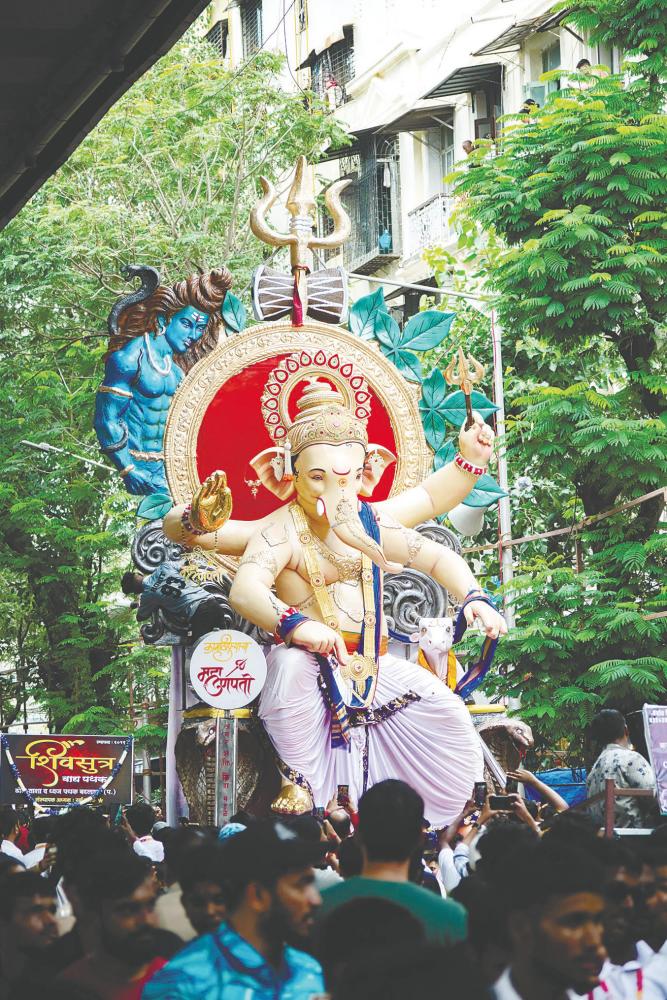THE many cultural and religious festivals in Malaysia are a great reflection of its melting pot identity. The colourful celebrations are a shining example of the Malaysian way of life that recognises and is respectful of events of different faiths that dot the calendar. One such event is the Hindu festival of Ganesha Chathurti which will begin tomorrow and be on-going until Sept 17. Although not a public holiday in Malaysia like Thaipusam or Deepavali, it is widely celebrated among the Hindu community here.
Here is a brief guide to this festival, which is of great significance to Hindus everywhere.
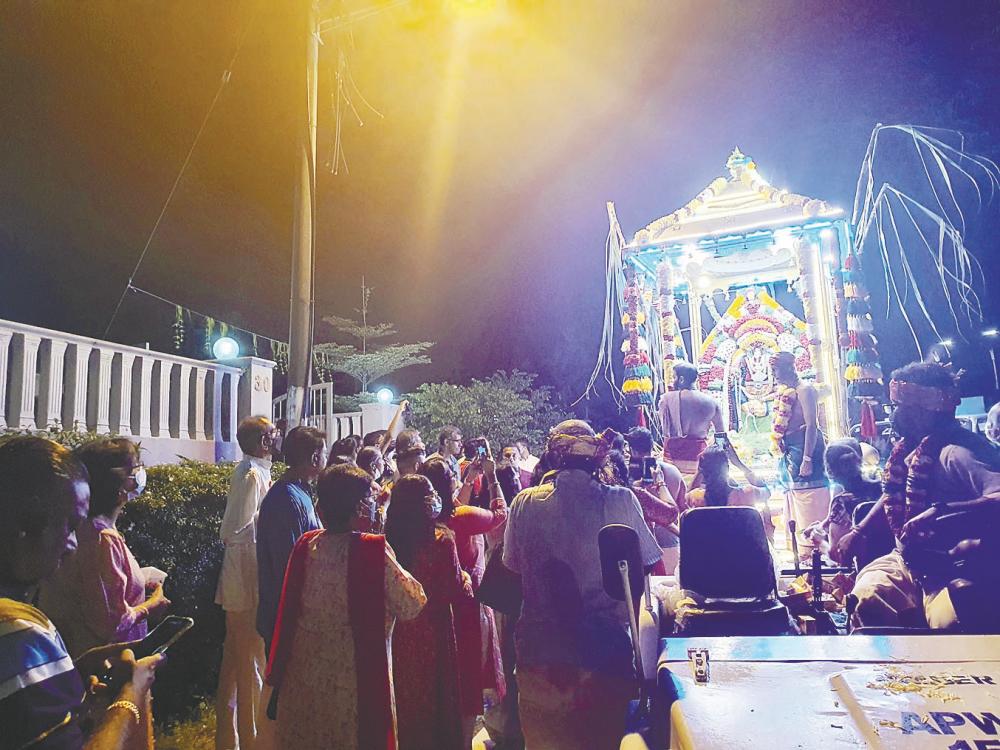
Significance
This colourful and deeply significant event is celebrated throughout Malaysia, especially in temples dedicated to the elephant-headed deity Ganesha (also popularly known as Ganapati or Vinayagar).
Lord Ganesha is characterised by his pot belly, a broken tusk, four hands that hold a goad, a pasam, sweet meats or laddoos and a pot of rice. His “chariot” is a mouse and is always seen as his companion at his shrine.
The festival is a big deal as all Hindus worship this deity, who is known as the remover of obstacles. However, as per Hindu tradition, all devotees start their religious rituals and important events with a prayer to Ganesha. Since Ganesha is the remover of obstacles, this ensures the event or task is a success, and that devotees’ prayers reach its intended destination and are not held back by hurdles.
Given that the rotund deity is also recognised as the “God of prosperity, wealth and knowledge”, the festivities also attract interest and devotion from non-Indian communities. This is apparent from the mixed crowds who line the streets to observe the annual chariot processions en route to Hindu temples as part of the festivities.
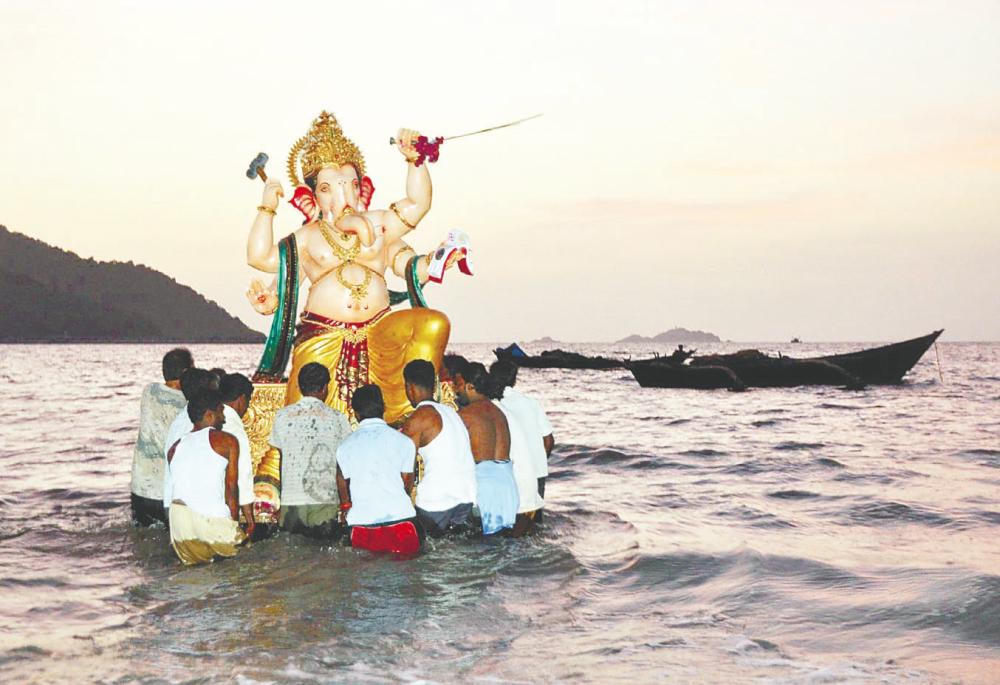
Origin stories
According to Hindu text, Ganesha came into being when the Goddess Parvati created a child from clay to stand guard while she took a bath. The instruction to her “newborn” was to let no one pass.
Ganesha carried this instruction out to the letter, denying even Lord Shiva (Parvati’s husband) to enter. Enraged at being denied entry into his own abode, Lord Shiva cut off Ganesha’s head. Upon learning that he was Goddess Parvati’s creation, Lord Shiva brought Ganesha back to life by replacing his head with that of an elephant’s.
Another popular legend relates to Lord Ganesha’s fondness for sweets. It was said that Lord Ganesha had attended a feast in which an over indulgence of ladoos led to the deity being unable to walk or balance himself. Seeing this, the Moon laughed at the hapless Ganesha, causing the deity to become angry and curse the Moon, which then disappeared causing the world to be enveloped in darkness.
After being appeased and the Moon had apologised, Lord Ganesha reversed the curse but on the condition that the Moon will be invisible for one day every month and that it will only be partially visible during Ganesha Chahurti.
Hence, many believe that those who watch the Moon on these dates will lead to them facing false accusations. And, that is the reason that people avoid looking at the moon on the day of Ganesha Chaturthi.
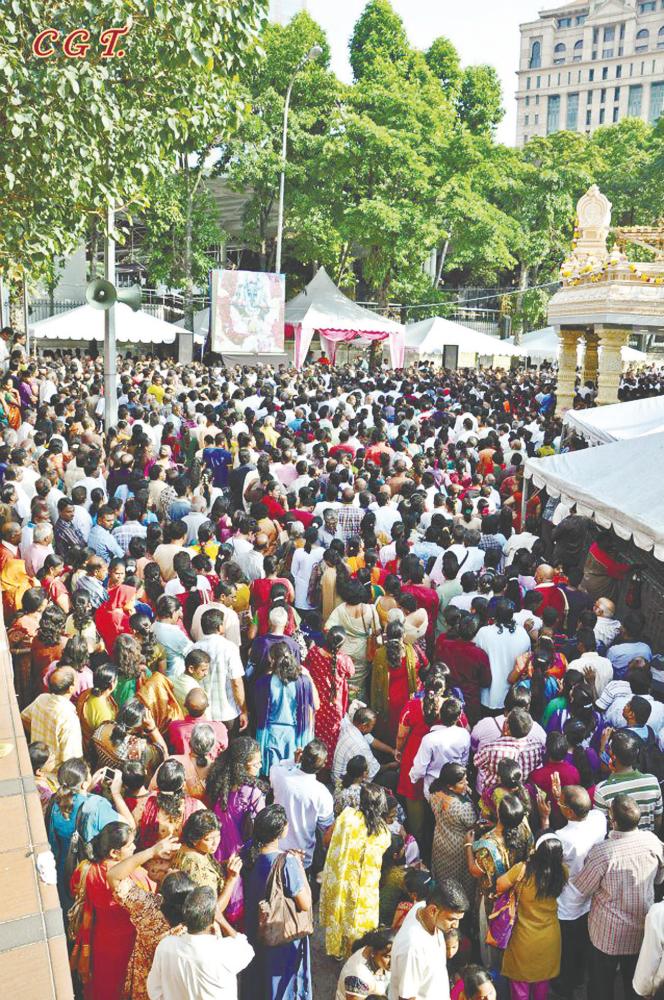
Rituals and traditions
Traditionally, Hindu devotees will create an idol with clay. This clay Ganesha will be placed on a pandal (temporary flower pavilion) before performing the Pran Prathistha ritual (invoking the god on earth) on the fourth day of the festival and worshipped till the end of the festivities.
On the last day, the idol will be carried on a chariot in a procession with devotees chanting and singing devotional songs to the rhythm of drum beats. The idol will be immersed in a river or sea as a symbol of sending him back to his celestial home after a brief “stay on earth”.
The ritual of immersing the deity is called Ganesha Visarjan. The clay will break down in the water and dissolve.
Since Lord Ganesha is said to have a sweet tooth, various sweets and desserts are prepared as offerings during the festival (see page 21 for recipes of traditional desserts usually made for this event). One popular sweet is the modak (also known as Kolukattai, or Kozhukatta in Tamil). These are made with rice flour dough filled with a mix of coconut and jaggery (palm tree sugar). These sweets are made fresh and offered to Lord Ganesha at home or temples before being shared with family members.
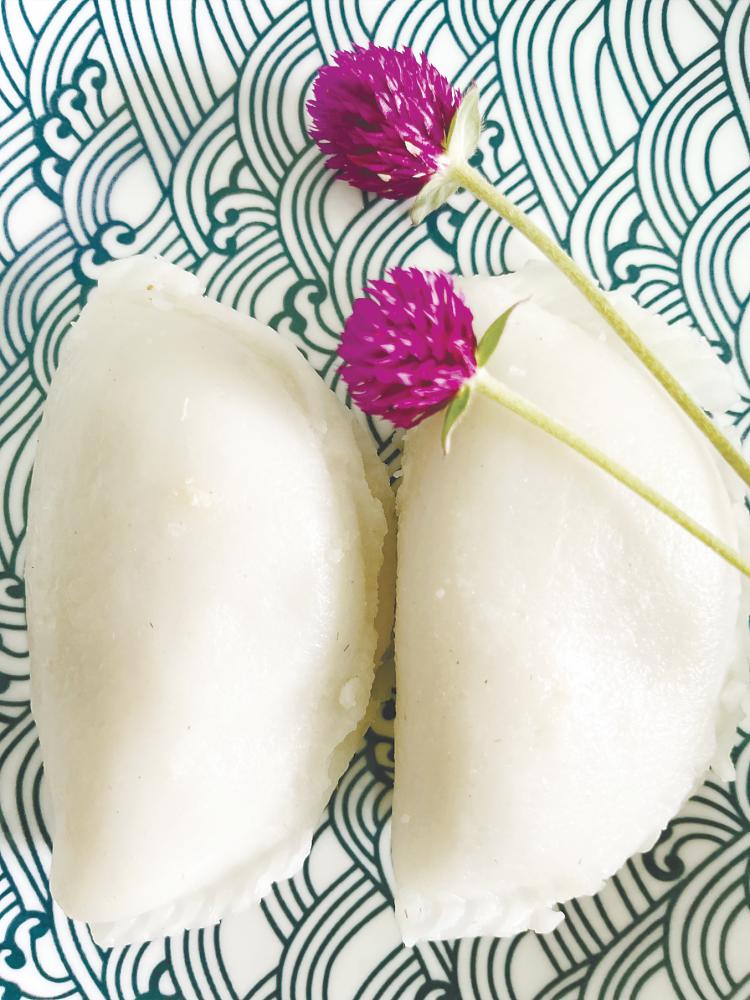
Ceremonies and processions
Although not a public holiday in Malaysia, expect significant crowds at temples dedicated to Lord Ganesha. The numbers will swell at the more well known places of worship such as the Court Hill Sri Ganesar Temple in Kuala Lumpur and the Sri Sithi Vinayagar Temple in Petaling Jaya.
In Penang, expect large crowds and boisterous celebrations at Arulmigu Sree Ganeshar Waterfall temple in Pulau Tikus.
However, all Hindu temples will be having celebrations on varying scales, whether it be poojas (special prayers) and milk baths for the deity to eleborate chariot processions. Those wanting to witness the latter should check online as to which temples are featuring the colourful chariots bearing Lord Ganesha as well as the relevant time and routes of the procession.
These will usually be well-planned and co-ordinated with Rela and municipal authorities involved to ensure the smooth passage of the chariots. But do note that there will be crowds, so be early and pick a good vantage point if intending to take pictures and videos.
As Malaysians prepare to celebrate Malaysia Day on Sept 16, the Ganesha Chathurti festival is a great example of the country’s ethnic and cultural diversity. It also emphasises Malaysians’ ability to live harmoniously and peacefully regardless of religious identities.
That is indeed a divine blessing and one we should all be grateful for.



